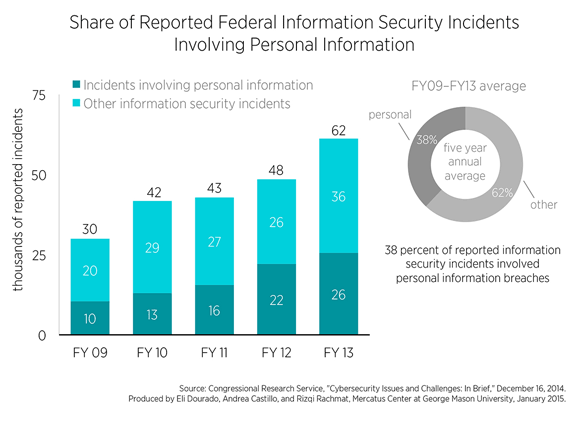Increased Cybersecurity Spending: 63.5% Of Manufacturers Rank It Top Priority

Table of Contents
The Rising Tide of Cyber Threats Against Manufacturers
Manufacturers are increasingly becoming targets of sophisticated cyberattacks, posing significant risks to operations, finances, and reputation. The rise in interconnected systems and reliance on digital technologies has expanded the attack surface, making manufacturers vulnerable to a wider range of threats.
-
Increased reliance on interconnected systems (IoT, cloud computing) expands attack surface: The proliferation of Internet of Things (IoT) devices and cloud-based systems within manufacturing environments creates numerous entry points for malicious actors. These interconnected systems, while offering operational efficiencies, also increase the potential for vulnerabilities and breaches.
-
Rising sophistication of cyberattacks targeting critical infrastructure: Cybercriminals are increasingly targeting Industrial Control Systems (ICS) and other critical infrastructure within manufacturing plants. Attacks like ransomware can cripple production lines, leading to significant financial losses and operational disruptions.
-
Growing financial losses due to downtime and data breaches: The cost of a successful cyberattack against a manufacturer can be astronomical, encompassing not only the direct costs of remediation but also lost revenue from production downtime, legal fees, and reputational damage. Data breaches can expose sensitive customer information, intellectual property, and trade secrets, leading to substantial fines and legal repercussions.
-
Regulatory compliance pressures (e.g., GDPR, NIST Cybersecurity Framework): Manufacturers face increasing regulatory scrutiny and compliance requirements regarding data protection and cybersecurity. Failure to comply with regulations like GDPR and the NIST Cybersecurity Framework can result in hefty penalties and legal action.
Why 63.5% of Manufacturers Prioritize Cybersecurity Spending
The decision by 63.5% of manufacturers to prioritize cybersecurity spending is directly linked to a clear understanding of the potential consequences of inaction. Investing in robust cybersecurity measures is no longer a discretionary expense; it's a strategic imperative for survival and growth.
-
Protecting intellectual property (IP) and trade secrets: Manufacturers hold valuable intellectual property and trade secrets that are attractive targets for industrial espionage and cyber theft. Strong cybersecurity protects this sensitive information from falling into the wrong hands.
-
Maintaining operational continuity and preventing production downtime: Cyberattacks can bring manufacturing operations to a standstill, resulting in significant financial losses. Robust cybersecurity measures minimize downtime and ensure business continuity.
-
Avoiding hefty fines and legal repercussions from data breaches: Data breaches can lead to significant fines and legal liabilities, especially under regulations like GDPR. Proactive cybersecurity investments minimize the risk of non-compliance and associated penalties.
-
Safeguarding customer trust and brand reputation: A major data breach or cyberattack can severely damage a manufacturer's reputation and erode customer trust. Strong cybersecurity protects brand image and fosters customer loyalty.
-
Improving overall operational efficiency through robust security measures: Efficient cybersecurity practices can streamline operations and improve overall productivity by minimizing disruptions caused by security incidents.
Key Areas of Cybersecurity Investment for Manufacturers
Manufacturers are directing their increased cybersecurity budgets towards several key areas to enhance their security posture.
-
Advanced threat detection and prevention technologies: This includes investing in endpoint detection and response (EDR), intrusion detection systems (IDS), and other advanced technologies to proactively identify and neutralize threats.
-
Improved employee cybersecurity training and awareness programs: Human error remains a significant vulnerability. Comprehensive training programs equip employees with the knowledge and skills to identify and avoid phishing attacks, malware, and other threats.
-
Implementation of robust security protocols and access controls: Strong authentication mechanisms, access control lists, and least privilege principles limit access to sensitive systems and data, reducing the potential impact of a successful breach.
-
Regular security audits and vulnerability assessments: Regular assessments identify vulnerabilities and weaknesses in the manufacturing environment, allowing for proactive remediation before they can be exploited by attackers.
-
Investing in cybersecurity insurance and incident response planning: Cybersecurity insurance provides financial protection in the event of a successful attack, while a well-defined incident response plan helps to minimize the damage and ensure a swift recovery.
The Future of Cybersecurity Spending in Manufacturing
The need for continued investment in manufacturing cybersecurity is undeniable. The threat landscape is constantly evolving, requiring manufacturers to adapt and invest in emerging technologies and strategies.
-
The continuous need for adapting to new threats and technologies: Cybercriminals are constantly developing new techniques and tools. Manufacturers must stay ahead of the curve by investing in advanced technologies and staying abreast of the latest threat intelligence.
-
The importance of proactive security measures over reactive responses: A proactive security posture is far more effective and cost-efficient than responding to attacks after they occur. Regular vulnerability assessments, security awareness training, and robust security protocols are vital components of a proactive approach.
-
The growing role of AI and machine learning in cybersecurity: AI and machine learning are revolutionizing cybersecurity, enabling faster threat detection, improved incident response, and more effective threat prevention.
-
The increased collaboration between manufacturers and cybersecurity experts: Partnering with experienced cybersecurity professionals provides access to specialized expertise, cutting-edge technologies, and best practices to enhance overall security posture.
Conclusion:
The overwhelming majority of manufacturers recognizing the critical need for increased cybersecurity spending signifies a crucial turning point. With cyber threats constantly evolving, a proactive and substantial investment in robust cybersecurity measures is no longer a luxury, but a necessity for survival and sustained success. Ignoring this reality risks significant financial losses, reputational damage, and operational disruption. Don't wait for a crisis—take control of your manufacturing cybersecurity today. Explore solutions tailored to the unique vulnerabilities of your manufacturing environment and secure your future by prioritizing increased cybersecurity spending.

Featured Posts
-
 11 10 Defeat Dodgers Rally Fails In Slugfest
May 13, 2025
11 10 Defeat Dodgers Rally Fails In Slugfest
May 13, 2025 -
 Luxury Car Sales In China The Bmw And Porsche Case Study
May 13, 2025
Luxury Car Sales In China The Bmw And Porsche Case Study
May 13, 2025 -
 Nba Tankathon A Deeper Dive Into The Miami Heats Draft Prospects
May 13, 2025
Nba Tankathon A Deeper Dive Into The Miami Heats Draft Prospects
May 13, 2025 -
 Springwatch Japan Timing Locations And Best Viewing Spots For Cherry Blossoms
May 13, 2025
Springwatch Japan Timing Locations And Best Viewing Spots For Cherry Blossoms
May 13, 2025 -
 Lara Croft Tomb Raider The Cradle Of Life Technical Aspects And Graphics
May 13, 2025
Lara Croft Tomb Raider The Cradle Of Life Technical Aspects And Graphics
May 13, 2025
